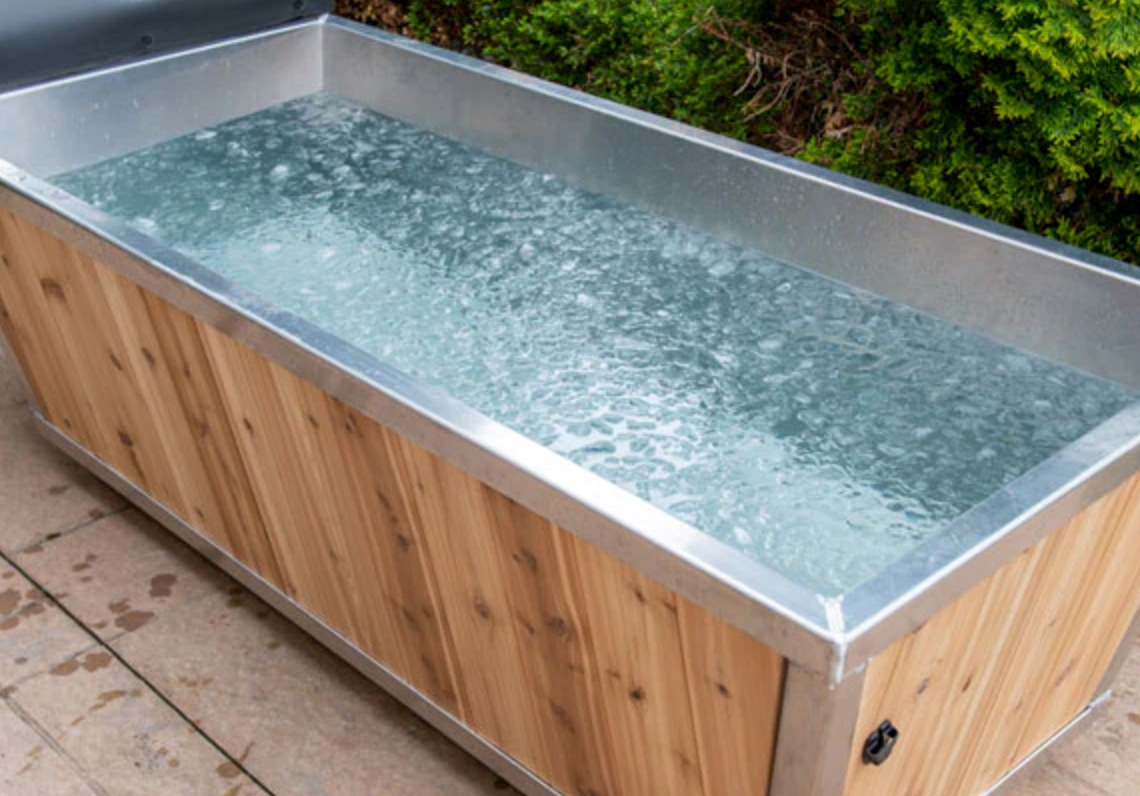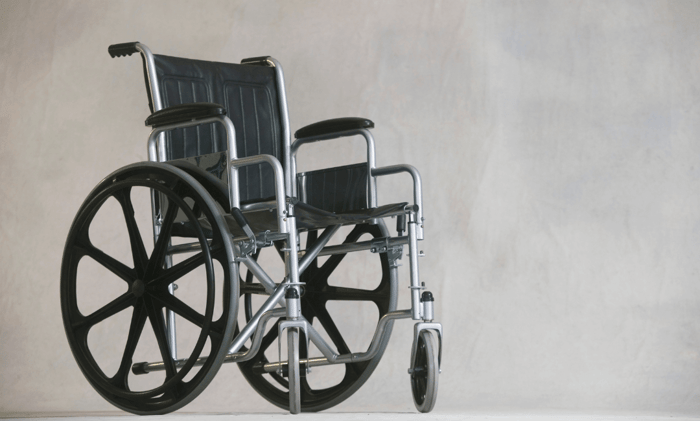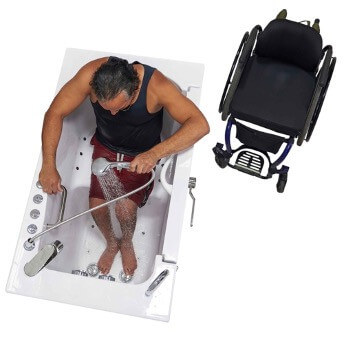
If you're reading this, chances are you're looking to understand the world of wheelchairs better. Whether you're a caregiver, a healthcare professional, or someone who needs a wheelchair, this guide is for you. We're diving deep into the different types of wheelchairs available today. We'll explore their features, benefits, and who they're best suited for.
So, let's get rolling!
Featherweight Wheelchairs
Featherweight wheelchairs are the epitome of convenience. Weighing as little as 19 pounds, these chairs are perfect for those who are always on the go. They're easy to fold, store, and transport, making them ideal for travel. But don't let their lightweight nature fool you; they're sturdy and can support up to 250 pounds.
The featherweight category is a game-changer for people who want to maintain an active lifestyle. These wheelchairs often come with advanced materials like carbon fiber or aircraft-grade aluminum. They're not just light; they're durable. So, if you're someone who doesn't want to be weighed down by your mobility device, this is your go-to option.
Lightweight Wheelchairs
Lightweight wheelchairs are the middle ground between standard and featherweight options. They usually weigh between 25 to 35 pounds and offer a balance of comfort and portability. These chairs are often the choice for everyday use, providing a blend of features that cater to various needs.
What sets lightweight wheelchairs apart is their adaptability. You can easily customize them with various accessories like cushions, backrests, and adjustable armrests. They're versatile, making them suitable for both indoor and outdoor use. If you're looking for a wheelchair that offers a bit of everything without breaking the bank, lightweight wheelchairs should be on your radar.
Ergonomic Wheelchairs
Ergonomic wheelchairs are designed with your body's natural shape in mind. These chairs focus on providing optimal comfort and reducing pressure sores. They come with specialized seats, contoured backrests, and adjustable features that adapt to your body's unique needs.
The ergonomic design is especially beneficial for long-term users. It minimizes the risk of developing spinal deformities and other posture-related issues. If comfort is your top priority, and you plan on spending a significant amount of time in your wheelchair, an ergonomic model is worth the investment.
Transport Wheelchairs

Transport wheelchairs are the no-frills, straightforward option for short-term use. They're lightweight but not designed for self-propulsion. Instead, they require a caregiver to push. These chairs are often used in hospitals or during travel and are perfect for quick trips to the doctor or store.
The main advantage of transport wheelchairs is their simplicity. They're easy to fold, store, and maneuver through tight spaces. However, they lack many of the customizable features found in other types. If you need a wheelchair for occasional use and have someone to assist you, a transport wheelchair is a practical choice.
Reclining Manual Wheelchairs
Reclining manual wheelchairs offer the unique feature of a reclining backrest. This allows the user to change positions easily, providing relief from prolonged sitting. These chairs are ideal for individuals who require better back support or have circulatory issues.
The reclining feature is more than just a luxury; it's a necessity for some users. It helps in pressure redistribution, reducing the risk of pressure sores. These wheelchairs often come with elevating leg rests, providing a more comfortable experience. If you're someone who needs to adjust positions frequently, a reclining manual wheelchair is worth considering.
Tilt-in-Space Wheelchairs
Tilt-in-space wheelchairs are the pinnacle of comfort and support. These chairs allow the entire seat to tilt, maintaining the hip-to-back angle while shifting the user's weight. This is crucial for people with severe physical limitations or those at high risk for pressure sores.
These wheelchairs are often recommended for individuals with complex medical conditions. The tilting mechanism helps in pressure management, respiratory function, and improved posture. They're not for everyone, but if you have specific medical needs that require meticulous weight distribution, tilt-in-space is the way to go.
Standing Wheelchairs
Standing wheelchairs are revolutionary in terms of functionality. These chairs allow the user to stand up, offering a range of health benefits like improved circulation and bone density. They're particularly useful for people who need to reach high places or want to stand during social events.
The ability to stand has psychological benefits as well. It can improve self-esteem and social interaction, making these wheelchairs more than just a mobility device. However, they are on the pricier side and may not be covered by insurance. If standing is a crucial part of your daily life, investing in one of these could be life-changing.
Bariatric Wheelchairs

Bariatric wheelchairs are designed for heavier users, with weight capacities ranging from 300 to 700 pounds. These chairs are built with reinforced frames and wider seats to accommodate larger individuals. They're robust but often heavier and less portable than other types.
If you're a larger individual, a bariatric wheelchair can provide the support and durability you need. These chairs often come with additional features like reinforced upholstery and heavy-duty wheels. They're not just about size; they're about providing a safe and comfortable experience.
Standard Wheelchairs
Standard wheelchairs are the most commonly used and are often the first choice for new users. They're durable, functional, and usually the most affordable. These chairs typically weigh around 35 to 45 pounds and are best for people who don't require a lot of customizations.
While they may lack the bells and whistles of more specialized models, standard wheelchairs are reliable. They're made from durable materials like steel and come with basic features like swing-away footrests and fixed armrests. If you're looking for a no-nonsense, reliable wheelchair, the standard model is a solid choice.
Discounted Manual Wheelchairs
Budget constraints shouldn't limit your mobility. Discounted manual wheelchairs offer basic functionality at a lower price point. These chairs are often used models that have been refurbished or are simpler designs with fewer features.
While discounted wheelchairs may lack some of the advanced features, they still provide essential mobility. They're a good option for temporary use or as a backup chair. Just make sure to thoroughly check the chair's condition and ensure it meets safety standards before making a purchase.
Conclusion
So, there you have it—a comprehensive guide to the different types of wheelchairs out there. From the classic manual wheelchairs to the high-tech electric ones, each type serves a unique purpose and offers distinct advantages.
Remember, the best wheelchair for you is the one that meets your specific needs. Consult with healthcare professionals, try out different models, and take your lifestyle into account before making a decision.
Ready to Find Your Perfect Wheelchair? Visit Nurture Mobility Today!
You've read the guide, you've weighed your options, and now you're ready to take the next step. Don't just settle for any wheelchair; choose one that's tailored to your unique needs and lifestyle. At Nurture Mobility, we offer a wide range of wheelchairs, from manual to electric, pediatric to sports-specific.
We're not just about selling wheelchairs; we're about enhancing your quality of life. Our expert team is here to guide you through the selection process, ensuring you make an informed decision tailored to your needs.
👉 Visit Nurture Mobility Now to explore our extensive range and find the wheelchair that's just right for you. Your journey to greater mobility and freedom starts here!












